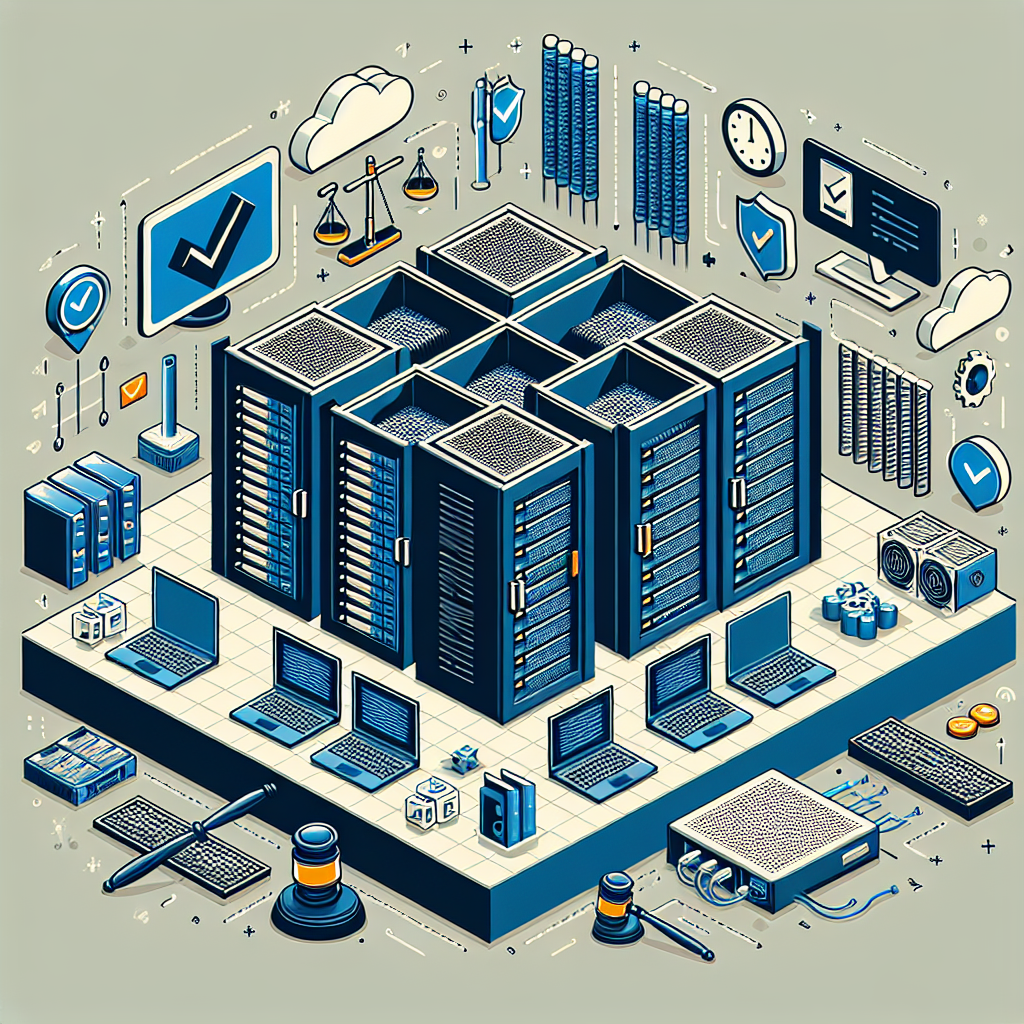In today’s digital age, data centers play a crucial role in ensuring the smooth operation of businesses and organizations. These facilities house and manage the critical information and systems that are essential for daily operations. As such, maintaining data center compliance is essential to ensure that data is secure, accessible, and protected from unauthorized access and breaches.
To help organizations maintain data center compliance, there are several best practices that they can follow. These practices are designed to ensure that data centers are secure, reliable, and compliant with industry regulations and standards. Here are some of the best practices for maintaining data center compliance:
1. Implement a comprehensive security policy: One of the most important aspects of maintaining data center compliance is having a comprehensive security policy in place. This policy should outline the procedures and protocols for protecting data, ensuring access controls, and monitoring for any suspicious activities. It should also include guidelines for physical security measures, such as access controls, surveillance cameras, and biometric scanners.
2. Regularly update and patch systems: Keeping systems up to date with the latest security patches and updates is essential for maintaining data center compliance. Outdated software and systems are more vulnerable to security breaches and attacks, so it’s important to regularly check for updates and patches and apply them as soon as possible.
3. Conduct regular security audits: Regular security audits are essential for identifying any vulnerabilities or weaknesses in the data center’s security measures. These audits should be conducted by external security experts and should include a thorough assessment of the data center’s security protocols, access controls, and monitoring systems.
4. Train employees on security best practices: Employees are often the weakest link in data security, so it’s important to provide them with training on security best practices. This can include teaching them how to recognize phishing emails, avoid clicking on suspicious links, and follow proper protocols for accessing and handling sensitive data.
5. Encrypt sensitive data: Encrypting sensitive data is crucial for maintaining data center compliance. Encryption helps to protect data from unauthorized access and ensures that it remains secure both in transit and at rest. Organizations should implement encryption protocols for all sensitive data, including customer information, financial data, and intellectual property.
6. Monitor and log all activities: Monitoring and logging all activities within the data center is essential for maintaining compliance and detecting any unauthorized access or suspicious activities. Organizations should implement robust monitoring systems that track all user activities, access attempts, and system changes.
7. Backup data regularly: Regularly backing up data is essential for maintaining data center compliance. Backups help to ensure that data can be recovered in the event of a security breach, system failure, or natural disaster. Organizations should implement a regular backup schedule and store backups in secure locations, both on-site and off-site.
By following these best practices for maintaining data center compliance, organizations can ensure that their data centers are secure, reliable, and compliant with industry regulations and standards. By implementing comprehensive security policies, regularly updating and patching systems, conducting security audits, training employees on security best practices, encrypting sensitive data, monitoring and logging all activities, and backing up data regularly, organizations can protect their data and ensure the smooth operation of their businesses.


Leave a Reply